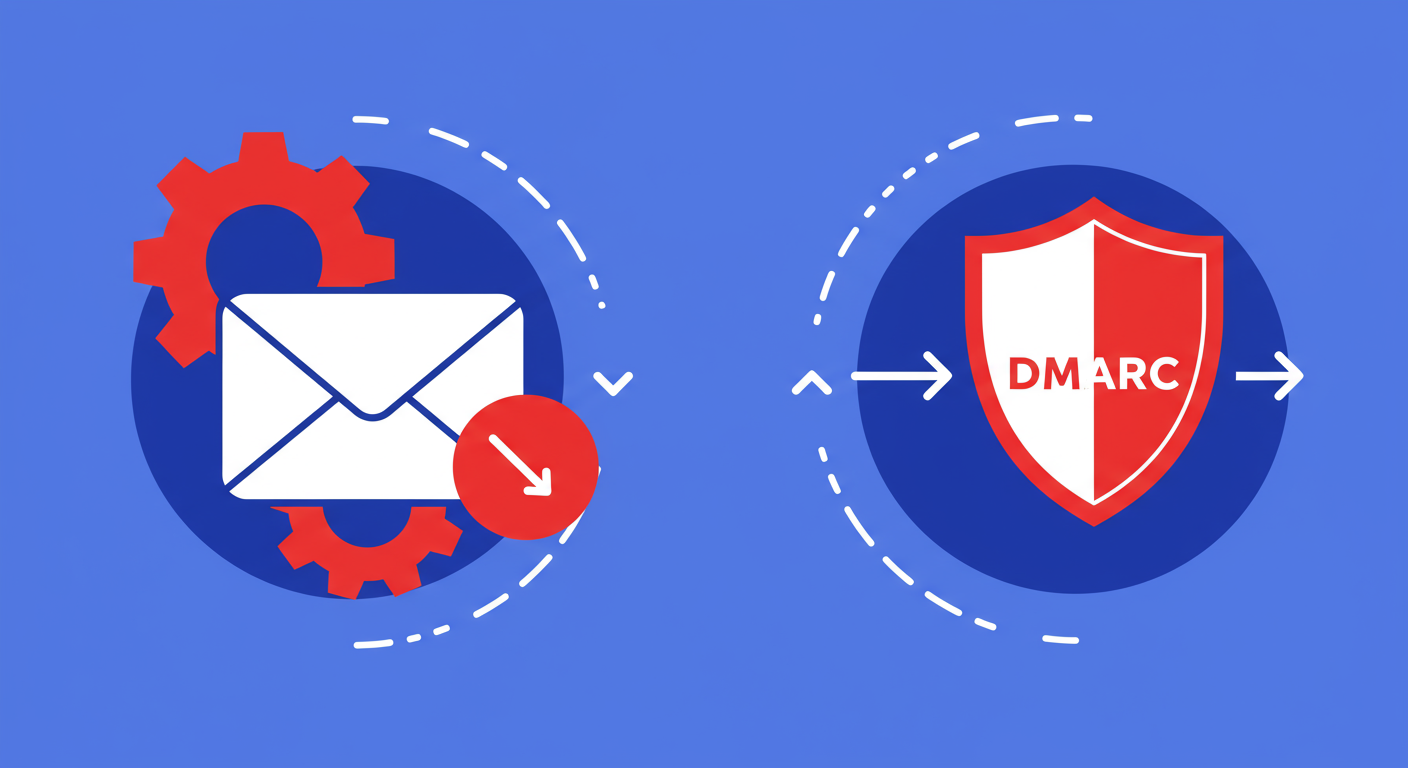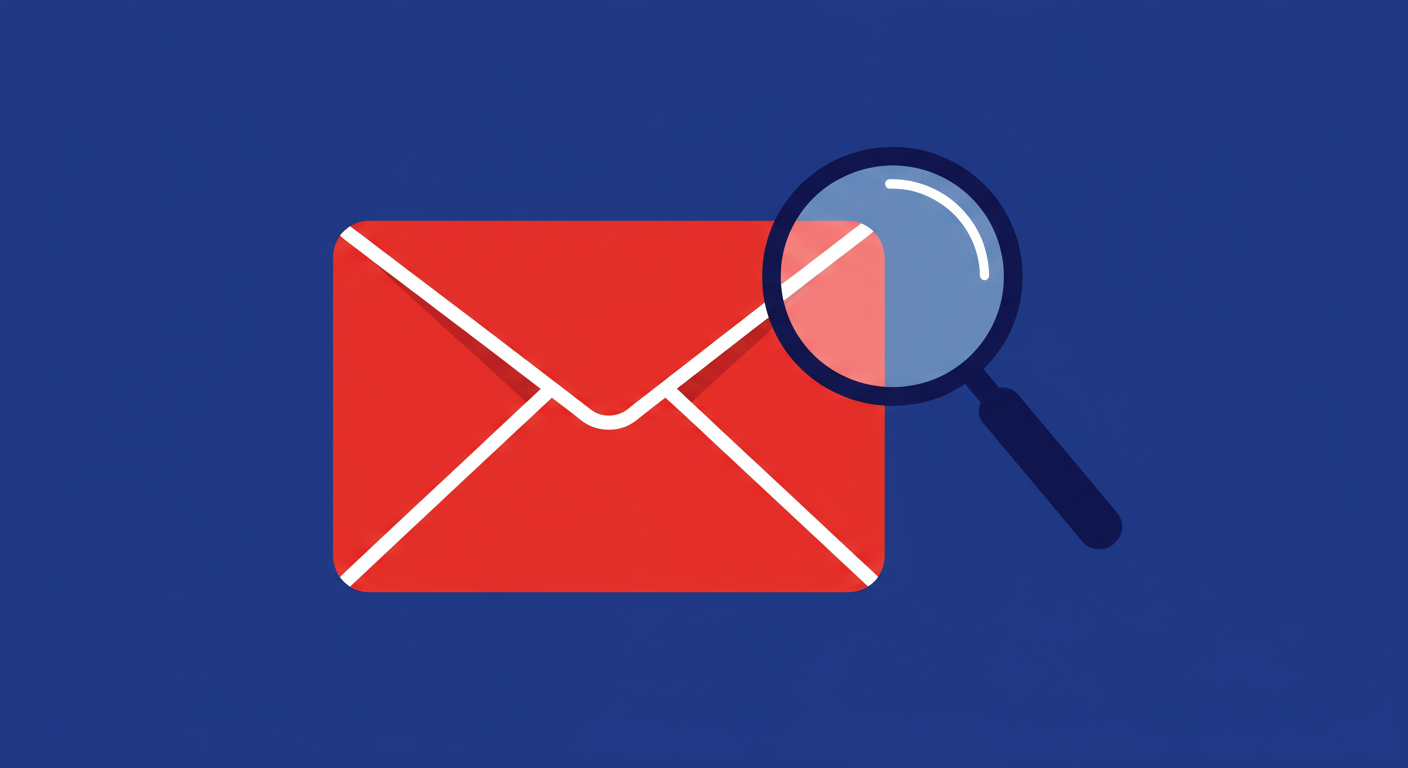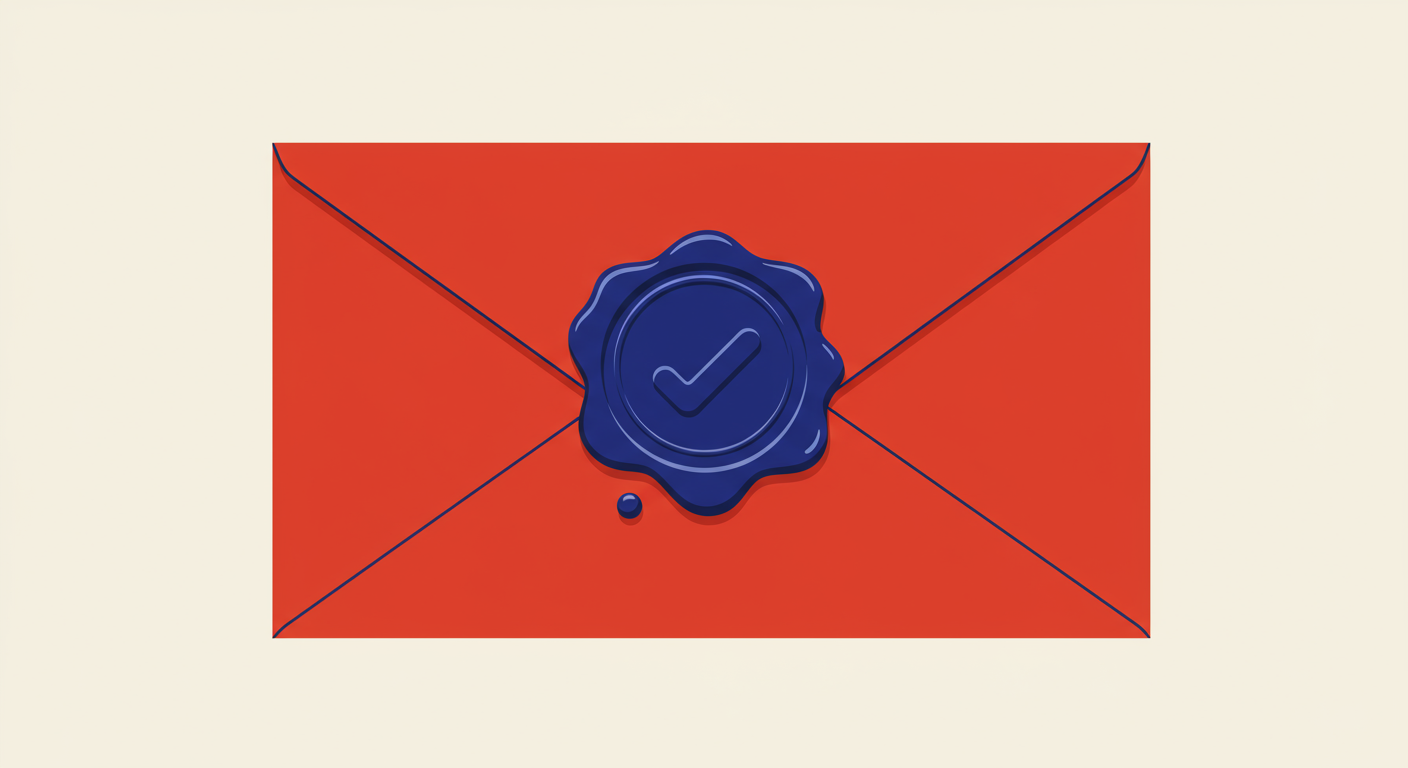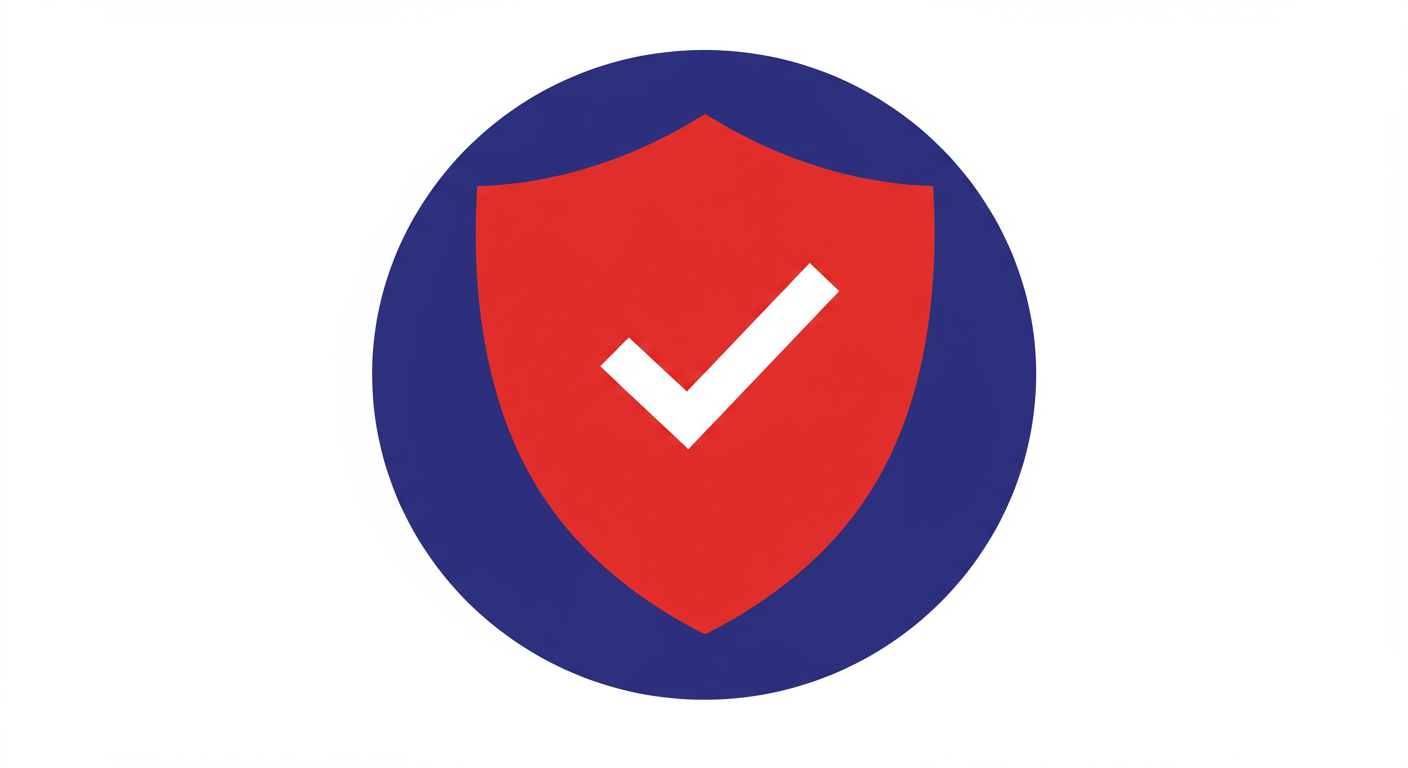
If you're managing a domain's DNS settings, you've likely come across a warning that says “DMARC policy not enabled” or something similar. It can be alarming, making you think your email is broken or insecure. The good news is that it’s not an error message indicating failure, but rather a notification. It's a sign that you've started the DMARC implementation process but haven't yet reached the final stage of enforcement.
Think of it as a checkpoint. You've successfully published a DMARC record, which is a fantastic first step towards securing your email channel against phishing and spoofing. Now, it's time to understand what this warning means and how to safely move forward. This process is crucial for improving email deliverability and protecting your brand's reputation, especially with recent sender requirements from major mailbox providers like Google and Yahoo.
The core of DMARC is its policy, which tells receiving email servers what to do with messages that fail authentication checks. There are three possible policies you can set in your DMARC record:
The “DMARC policy not enabled” warning appears when your record is set to p=none. While it’s an active and valid policy, it doesn't provide any enforcement against unauthorized emails. It simply puts your domain in a monitoring mode. This is an essential and highly recommended starting point for every DMARC project, as it allows you to gather crucial information before you start blocking emails.

The journey from p=none to an enforcement policy like p=reject is a methodical process. While at p=none, you should be receiving aggregate (RUA) reports to the email address specified in your DMARC record. These reports are XML files that contain data about all the emails sent using your domain, whether legitimate or not. Your goal during this phase is to analyze these reports to identify every service that sends email on your behalf.
You will need to review the report data to see which sending sources are passing or failing SPF and DKIM authentication. For any legitimate services that are failing, you must take action to fix any authentication gaps. This often involves adding an IP address or domain to your SPF record, or setting up a DKIM signature for that service. This phase can take some time, from a few weeks to a few months, depending on the complexity of your email ecosystem.
Once you are confident that all your legitimate email streams are authenticating correctly, you can move to the next step. It's a good time to check your domain's overall health before proceeding. Being on a blocklist (or blacklist) can impact deliverability, and it's wise to resolve any existing issues.
 Spamhaus
Spamhaus 0Spam
0Spam Cisco
Cisco NoSolicitado
NoSolicitado URIBL
URIBL abuse.ro
abuse.ro ALPHANET
ALPHANET Anonmails
Anonmails Ascams
Ascams BLOCKEDSERVERS
BLOCKEDSERVERS Calivent Networks
Calivent Networks EFnet
EFnet
 JustSpam
JustSpam Kempt.net
Kempt.net
 NordSpam
NordSpam RV-SOFT Technology
RV-SOFT Technology
 Scientific Spam
Scientific Spam Spamikaze
Spamikaze SpamRATS
SpamRATS SPFBL
SPFBL Suomispam
Suomispam System 5 Hosting
System 5 Hosting Team Cymru
Team Cymru Validity
Validity www.blocklist.de Fail2Ban-Reporting Service
www.blocklist.de Fail2Ban-Reporting Service ZapBL
ZapBL 2stepback.dk
2stepback.dk Fayntic Services
Fayntic Services ORB UK
ORB UK technoirc.org
technoirc.org TechTheft
TechTheft Spamhaus
Spamhaus 0Spam
0Spam Cisco
Cisco NoSolicitado
NoSolicitado URIBL
URIBL abuse.ro
abuse.ro ALPHANET
ALPHANET Anonmails
Anonmails Ascams
Ascams BLOCKEDSERVERS
BLOCKEDSERVERS Calivent Networks
Calivent Networks EFnet
EFnet
 JustSpam
JustSpam Kempt.net
Kempt.net
 NordSpam
NordSpam RV-SOFT Technology
RV-SOFT Technology
 Scientific Spam
Scientific Spam Spamikaze
Spamikaze SpamRATS
SpamRATS SPFBL
SPFBL Suomispam
Suomispam System 5 Hosting
System 5 Hosting Team Cymru
Team Cymru Validity
Validity www.blocklist.de Fail2Ban-Reporting Service
www.blocklist.de Fail2Ban-Reporting Service ZapBL
ZapBL 2stepback.dk
2stepback.dk Fayntic Services
Fayntic Services ORB UK
ORB UK technoirc.org
technoirc.org TechTheft
TechTheft Spamhaus
Spamhaus 0Spam
0Spam Cisco
Cisco NoSolicitado
NoSolicitado URIBL
URIBL abuse.ro
abuse.ro ALPHANET
ALPHANET Anonmails
Anonmails Ascams
Ascams BLOCKEDSERVERS
BLOCKEDSERVERS Calivent Networks
Calivent Networks EFnet
EFnet
 JustSpam
JustSpam Kempt.net
Kempt.net
 NordSpam
NordSpam RV-SOFT Technology
RV-SOFT Technology
 Scientific Spam
Scientific Spam Spamikaze
Spamikaze SpamRATS
SpamRATS SPFBL
SPFBL Suomispam
Suomispam System 5 Hosting
System 5 Hosting Team Cymru
Team Cymru Validity
Validity www.blocklist.de Fail2Ban-Reporting Service
www.blocklist.de Fail2Ban-Reporting Service ZapBL
ZapBL 2stepback.dk
2stepback.dk Fayntic Services
Fayntic Services ORB UK
ORB UK technoirc.org
technoirc.org TechTheft
TechTheft Spamhaus
Spamhaus 0Spam
0Spam Cisco
Cisco NoSolicitado
NoSolicitado URIBL
URIBL abuse.ro
abuse.ro ALPHANET
ALPHANET Anonmails
Anonmails Ascams
Ascams BLOCKEDSERVERS
BLOCKEDSERVERS Calivent Networks
Calivent Networks EFnet
EFnet
 JustSpam
JustSpam Kempt.net
Kempt.net
 NordSpam
NordSpam RV-SOFT Technology
RV-SOFT Technology
 Scientific Spam
Scientific Spam Spamikaze
Spamikaze SpamRATS
SpamRATS SPFBL
SPFBL Suomispam
Suomispam System 5 Hosting
System 5 Hosting Team Cymru
Team Cymru Validity
Validity www.blocklist.de Fail2Ban-Reporting Service
www.blocklist.de Fail2Ban-Reporting Service ZapBL
ZapBL 2stepback.dk
2stepback.dk Fayntic Services
Fayntic Services ORB UK
ORB UK technoirc.org
technoirc.org TechTheft
TechTheft Spamhaus
Spamhaus 0Spam
0Spam Cisco
Cisco NoSolicitado
NoSolicitado URIBL
URIBL abuse.ro
abuse.ro ALPHANET
ALPHANET Anonmails
Anonmails Ascams
Ascams BLOCKEDSERVERS
BLOCKEDSERVERS Calivent Networks
Calivent Networks EFnet
EFnet
 JustSpam
JustSpam Kempt.net
Kempt.net
 NordSpam
NordSpam RV-SOFT Technology
RV-SOFT Technology
 Scientific Spam
Scientific Spam Spamikaze
Spamikaze SpamRATS
SpamRATS SPFBL
SPFBL Suomispam
Suomispam System 5 Hosting
System 5 Hosting Team Cymru
Team Cymru Validity
Validity www.blocklist.de Fail2Ban-Reporting Service
www.blocklist.de Fail2Ban-Reporting Service ZapBL
ZapBL 2stepback.dk
2stepback.dk Fayntic Services
Fayntic Services ORB UK
ORB UK technoirc.org
technoirc.org TechTheft
TechTheftAfter confirming your legitimate senders are aligned and your domain is in good standing, you can update your DMARC policy to p=quarantine. This is a safer intermediate step before full rejection. By quarantining failing messages, you reduce the risk of spoofed emails reaching the inbox while minimizing the impact if you missed a legitimate sending source. Continue to monitor your reports to ensure no valid mail is being sent to spam.
The final destination in your DMARC journey is a policy of reject (p=reject). This provides the highest level of protection by instructing email providers to completely block emails that fail authentication. This effectively stops unauthorized senders from using your domain, protecting your customers and your brand from phishing attacks that could tarnish your reputation.
To make this change, you simply need to edit your DMARC TXT record in your DNS provider's control panel. You will find your existing record, which looks something like v=DMARC1; p=quarantine; rua=mailto:your@email.com, and change the p tag from quarantine to reject. The updated record would then be v=DMARC1; p=reject; rua=mailto:your@email.com.

Before you make this final switch, be absolutely certain that all legitimate sending platforms have been properly authenticated. Moving to p=reject prematurely is a common mistake that can lead to significant problems, including valid marketing campaigns, transactional emails, and even internal communications being blocked. Continue to monitor your DMARC reports even after reaching rejection to catch any new services or configuration issues that may arise.
Resolving the “DMARC policy not enabled” warning is a journey, not a quick fix. It involves progressing from a state of monitoring to one of full enforcement. By starting with p=none, you can safely gather the data needed to configure SPF and DKIM correctly for all your senders. Then, you can confidently move to p=quarantine and finally to p=reject.
Following these steps not only removes the warning but also hardens your domain against abuse. It's a critical practice for maintaining strong email deliverability, building trust with mailbox providers, and protecting your brand and your customers from malicious actors. Taking the time to do it right is one of the best investments you can make in your email program.












